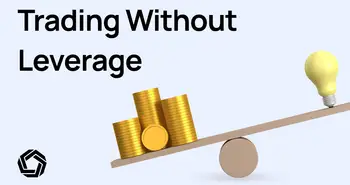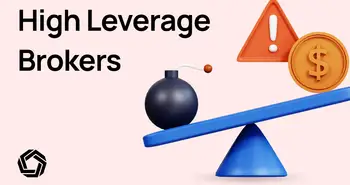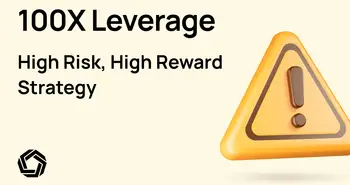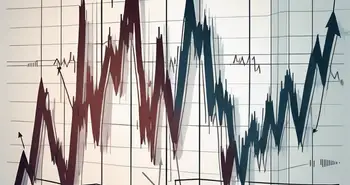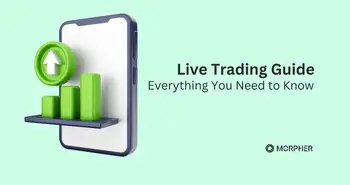Leverage Trading: A Double-Edged Sword ⚔️
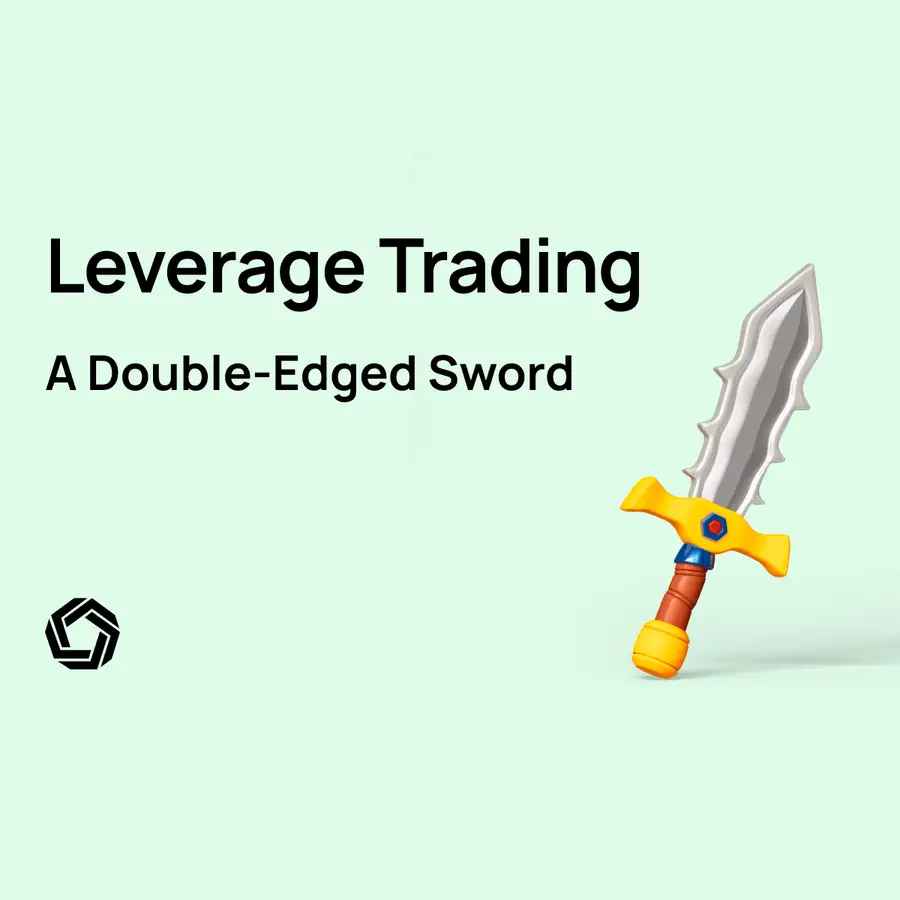
Leverage trading is a strategy that involves borrowing money in order to amplify potential gains. The concept of leverage trading first emerged in the late 2000s and has since become a popular method in foreign exchange (Forex) markets. Today, leverage trading can also be applied to other markets such as commodities, cryptocurrencies, and stocks.
Another term used often in leverage trading is leverage ratio. Leverage ratio indicates how much your capital is multiplied, which is typically presented under “X:1” or “1:X” format. For example, a 1:5 leverage ratio means your trade size is multiplied by 5 times or a 1:100 ratio means you magnify your position size by 100 times.
While leverage trading can boost the potential for increased returns, it also exposes traders to a significant amount of risk, particularly in volatile market conditions. This is why it is important to have a solid understanding of leverage trading and risk management before engaging in this type of trading.
How Leverage Trading Works
Learning the fundamentals of how leverage trading works is a good place to start for anyone interested to use leverage for trading.
To get started, it is necessary to first deposit funds into your trading account. This amount, also known as collateral, is used to calculate your leverage ratio.
For example, if you use a leverage ratio of 10:1, you can trade with $5,000 worth of the stock by putting down only $500 as collateral. This means that profit or losses would be amplified by a factor of 10.

Without leverage, if the stock increases in price by 10%, your $500 investment would increase in value by $50 (10% of $500). With leverage, the same 10% price increase would result in a $500 gain (10% of $5,000). This is how leverage trading can amplify potential returns.
On the other edge of the sword, leverage also magnifies potential losses if your prediction is wrong. Without leverage, if the stock decreases in price by 10%, your $500 investment would decrease in value by $50. But with leverage, the same 10% price decrease would result in a $500 loss. And if you deposited only $500 in your account, this one bad trade using leverage would wipe out your entire investment.
That’s why it is important to keep in mind that the higher your leverage is, the riskier your position is. When things don't go according to your original plan, there can be a high possibility of liquidation.
Trading with leverage is a double-edged sword that can bleed your portfolio quickly. A couple of well-timed trades can quickly turn into significant profits if the right practices are followed. On the other side, one move made without due caution can wipe out your holding account.
Advantages of Using Leverage in Trading
- Ability to increase potential returns on investment
Traders who forecast that the price will rise put buy orders to open long positions, and when the price rises as expected, investors profit. In a declining market, traders can profit from falling prices by opening short positions.
Because traders only need to deposit a portion of the contract value, leverage trading provides them with a much higher amount of leverage, allowing them to earn bigger profits than spot trading for instance.
- Potential to amplify profits in a short period of time
With a larger capital available because of leverage, traders can close out positions and/or open new ones more often, based on market movements. This allows them to profit on short-term price changes and potentially increase profits in a relatively short amount of time.
- Ability to trade larger positions with a smaller capital base
Trading with leverage helps traders with limited capital to enter markets with larger positions. Instead of paying in full for a transaction, investors can choose to pay just a small portion of it and borrow the rest. This strategy is advantageous not just for traders with small capitals, but also for professional traders who want to open more positions at the same time.
Forex is a good example of a market where leverage can be beneficial. Currency pairs typically don't experience large price movements like other markets such as cryptocurrencies.
For example, a 1% increase in the value of the EUR/USD pair would result in a profit of $1,000 for a trader who invested $100,000. But for a trader with a smaller account, such as $1,000, the same 1% increase would result in a profit of only $10.
This is where leverage comes in. With 10x leverage, the trader with a smaller account can now open a $100,000 position by borrowing the rest of the money from the broker and make the same profit ($1,000) as a trader with a larger account.
The Risks of Leverage Trading
- Increased risk of losing your capital
When trading with leverage, a small move in the market can result in a large percentage loss on your account. This can lead to a rapid depletion of your account balance, particularly if you are using high leverage.
- Risk of a gap
Leverage trading can also be affected by gaps, which are sudden changes in the price of an asset, usually caused by unexpected events, such as natural disasters. When this happens, traders may be forced to close their positions at a big loss, as they might not have enough margin to cover the gap.
- Risk of overtrading
Overtrading is a common risk for traders who use leverage. Leverage allows traders to control a larger amount of capital, which can lead to overtrading. One of the main reasons for overtrading is the belief that with more trades, the chances of making a profit are higher. In reality, this is not always the case as more trades can lead to emotional and mental fatigue and more opportunities for mistakes.
Strategies for Managing Risk
- Diversification
Diversification is a great strategy for managing risk when trading with or even without leverage. By trading a variety of different assets belonging to different industry groups, traders can spread the risk across different markets and sectors, reducing the impact of any one trade.
Take for example a trader who invests all his money in a single stock, such as Tesla. If Elon Musk screws up and Tesla crashes, it’s game over for the trader’s account as well, since he “put all his eggs in one basket”.
Now let’s consider a different scenario, with a trader that is not putting all his eggs in the same basket. The trader allocates 20% of his portfolio in technology stocks, 30% in crypto, 25% in gold and 25% in real estate.
If the technology sector underperforms and the stock prices crash, the loss is minimized because it represents only 20% of the total portfolio and the other assets might perform better and therefore offset the losses. Diversification helps to spread the risk and most professional traders are using this strategy to optimize their profits and limit losses.
- Setting stop-loss orders
The main purpose of a stop-loss order is to limit potential losses on a trade. By setting a stop-loss order, traders will exit a trade automatically if the market moves against them, and the potential loss is limited to the specified amount set by the trader. This helps to decrease the overall risk of losing everything in just one or few trades.
- Keeping leverage low
Proper leverage management is another crucial aspect of managing risk in leverage trading. Traders who are not experienced should be very careful when using high leverage brokers when trading. A beginner trading with 1:500 leverage can easily lose all his funds in just a handful of trades.
In general, a leverage of 1:10 is considered high for someone with a low risk tolerance. It may be suitable for those with a high risk tolerance. Professional traders, who have larger profit goals and enough expertise to deal with market swings, may use a higher leverage ratio to achieve their targets more quickly.
Final Thoughts
Leverage trading has the potential to be highly beneficial if executed correctly and with the right strategy.
However, a general rule in the world of finance specifies that investors should assume significant risks whenever they are seeking large profits. In the event that the market goes in the opposite direction of what the evaluation indicates, the loss will also be amplified. Thus, it’s essential to carefully consider your leverage ratio, develop a comprehensive trading strategy, and evaluate both your profit and stop-loss levels.

Disclaimer: All investments involve risk, and the past performance of a security, industry, sector, market, financial product, trading strategy, or individual’s trading does not guarantee future results or returns. Investors are fully responsible for any investment decisions they make. Such decisions should be based solely on an evaluation of their financial circumstances, investment objectives, risk tolerance, and liquidity needs. This post does not constitute investment advice.

Painless trading for everyone
Hundreds of markets all in one place - Apple, Bitcoin, Gold, Watches, NFTs, Sneakers and so much more.

Painless trading for everyone
Hundreds of markets all in one place - Apple, Bitcoin, Gold, Watches, NFTs, Sneakers and so much more.

